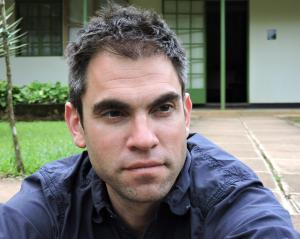Joel Hartter, from the University of Colorado, presented “Local People and the Global Conservation Imperative: Perspectives from the Albertine Rift” at the 01/29/2021 Baraza. Dr. Hartter is an associate professor of environmental studies and earned his doctorate from UF. His publications include: “More Robust Local Governance Suggests Positive Effects of Long-term Community Conservation.” Conservation Science & Practice (co-author, 2020); “Mapping Natural Resource Collection Areas from Household Survey Data in southern Africa.” Applied Geography (co-author, 2019); and “Livelihood Diversification, Mobile Phones and Information Diversity in Northern Tanzania.” Land Use Policy (co-author, 2017).
Dr. Hartter began his presentation by discussing the intersection of conservation and population growth in the context of Africa. Africa’s population growth supersedes that of any other continent on the planet. This means more resources must be allocated to support the population boom, particularly in sub-Saharan Africa. Across the continent, there are biodiversity hotspots that are home to thousands of endemic plant and animal species and are under threat of extinction.
The Eastern Afromontane Biodiversity Hotspot’s ecosystems, located mainly in Ethiopia, Tanzania, the Democratic Republic of Congo, and Uganda, provide millions of people with basic natural resources that are necessary to their survival. Despite the Eastern Afromontane’s abundance of natural resources, the region is characterized by high population density and pervasive poverty, which has been exacerbated by intense population growth. The stark poverty has become a barrier to sustainable long-term development or conservation. Both local communities and governments have adopted initiatives that result in quick solutions with little to no gains.
Within the Eastern Afromontane region, Dr. Hartter discussed the Albertine Rift, which is one of the most threatened areas of the biodiversity hotspot. Developing parks and protected areas has led to the regeneration of forests, promoting the protection of primates and other endangered, vulnerable, or threatened species. However, there are many threats to the survival of both wildlife and humans in this area. Global warming has affected the climate cycles leading to longer wet and dry seasons. This has stunted the growth of plants and crops leading to food insecurity. The little food that has grown is then threatened by baboons known to raid farms for crops. In response, local farmers take their children out of school so they can guard the fields, and their livelihoods, from wildlife.
Dr. Hartter ended his presentation by discussing what defines good conservation. He believes the answer lies in creative solutions that center both people and wildlife. Rather than taking a one-sided approach, he advocates for a holistic understanding of the multiple systems at risk in an effort to produce solutions that uplift all.
Recap written by: Elisabeth Rios-Brooks
